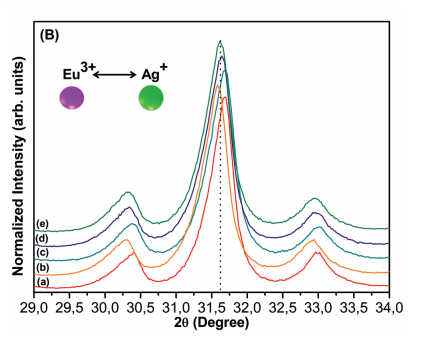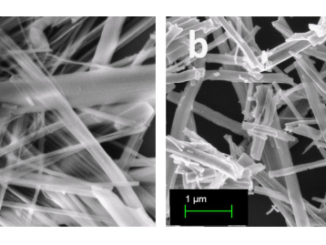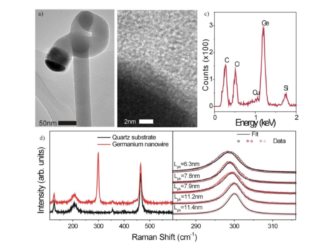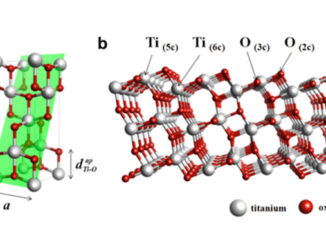
Structural and photoluminescence properties of Eu3+ doped alpha-Ag2WO4 synthesized by the green coprecipitation methodology
Abstract: Europium doped silver tungstates alpha-Ag2-3xEuxWO4 (x = 0, 0.0025, 0.005, 0.0075 and 0.01 mol) were synthesized by the coprecipitation method at 90 degrees C for 30 minutes. These crystals were structurally characterized by means of X-ray diffraction (XRD), Rietveld refinement, and micro-Raman (MR) and Fourier transformed infrared (FT-IR) spectroscopies. Field emission scanning electron microscopy (FE-SEM) images were employed to observe the shape of the crystals. The optical properties were investigated by ultraviolet-visible (UV-vis) absorption and photoluminescence (PL) measurements. The XRD pattern indicated structural organization at a long range for all undoped and Eu-doped samples, while MR and FT-IR revealed that the presence of the Eu3+ ions favors the structural organization at a short range. The Rietveld refinement showed that all the crystals are monophasic with an orthorhombic structure and the Pn (2) over barn space group. The refined lattice parameters and atomic positions were employed to model the WO6 and AgOn (n = 2, 4, 6 and 7) polyhedra in the unit cell. FE-SEM analysis revealed nanorod-like microcrystals with growth of metallic silver on the surface. Further, the UV-vis absorption spectra indicated the existence of intermediary energy levels within the band gap. PL spectra showed a broad band related to the [WO6] group and characteristic narrow peaks due to the f-f transitions of Eu3+ as a result of efficient energy transfer from the matrix. Also, the emission line shape transitions from D-5(0) to F-7(J) (J = 0-4) levels of the Eu3+ were noticed. Among the samples, the most intense photoluminescence results were observed for the alpha-Ag2-3xEuxWO4 (x = 0.0075) sample. Lifetime decays support that the Eu3+ ions occupy at least two crystallographic sites. CIE coordinates confirmed the colors of the emission spectra which classify this material as a potential phosphor in the visible range.
Author(s): Pinatti, IM; Nogueira, IC; Pereira, WS; Pereira, PFS; Goncalves, RF; Varela, JA; Longo, E; Rosa, ILV
DALTON TRANSACTIONS
Volume: 44 Pages: 17673-17685 Published: 2015
DOI: 10.1039/c5dt01997d




